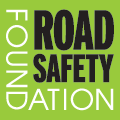HOW SAFE ARE YOU ON BRITAIN’S ROADS? – 2014 RESULTS
The majority of British road deaths are concentrated on just 10% of the British road network, motorways and ‘A’ roads outside major urban areas. This report measures and maps the differing risk of death and serious injury road users face across this network, sometimes 20 times or more different.
The report tracks which roads have improved, and those with persistent and unacceptable high risks. It highlights roads where authorities have taken effective action. On 15 stretches of roads, low cost action has reduced serious crashes by 80% worth a staggering £0.4bn to the economy.
The report shows major differences not only between individual roads but between whole regions. The risks road users face overall on the major roads of the East Midlands are a startling two thirds higher than neighbouring West Midlands – greater than between many European countries.
Risk on the roads depends on the way we drive, the vehicles we drive and the roads we drive on. But, with similar vehicles and drivers, it is the in-built safety of the roads in the West Midlands that explains its better performance – more travel is done on safer roads. The motorways and single carriageways of the West Midlands have the greatest in-built safety of any region.
It is often neither difficult nor expensive to raise infrastructure safety. It brings high returns to the economy. It requires systematic measurement of risk. The in-built safety of the infrastructure of roads, like cars, is now measured worldwide.
We should not be driving 5-star cars on major roads which have only a 1- and 2-star safety rating.
Like other leading nations, Britain must set an explicit minimum 3-star rating for infrastructure safety for major roads. Nowhere is this more urgent than on the nation’s Strategic Roads where the government is legislating to pass safety responsibilities to a new Corporation.
- Download the full report as page spread
- Download the full report as single page
- Regional Summary for Britain
- Download the Risk Rating map for Britain with Parliamentary Constituency boundaries
- Download the Risk Rating map for Scotland
- Download the Risk Rating map for Yorkshire & the Humber
- Download the Risk Rating map for West Midlands
- Download the Risk Rating map for East Midlands
- Download the Risk Rating map for North-West
- Download the Risk Rating map for North-East
- Download the Risk Rating map for East of England
- Download the Risk Rating map for Wales
- Download the Risk Rating map for South-East
- Download the Risk Rating map for South-West
- Download the full press release

